It is time get Cereus … or at least the fruit. And while the fruit of the genus is edible the difficult part is figuring out which Cereus you have. In fact, there is such a mishmash of names some of the species might not even exist. The point is moot however as long as you have the fruit.
Local morning walks have been decorated with the large graceful blossoms of the Cereus. These in turn become green then red fruit which are edible like other cactus fruit which means the pulp and ground seeds. Raw whole seeds destroy teeth because they are so hard. Don’t forget cactus are native to 46 of the 50 US states and have been exported around the world for centuries. A commercial version of the Cereus bounty grown in Israel is called “Dragon Fruit.” To read more about the confusing genus go here.
Our local “Bee Balm” is called Horsemint, botanically Monarda punctata. It will be soon putting on showy bracts making it easier to identify even from a speeding car. Your local species will vary but they are essentially used the same way, as medicine and a spice. Here’s n article about the genus from “Natural News” written by Tony Isaacs.
“Bee balm plants are a showy and fragrant group of plants indigenous to northeastern North America which have long been prized for their medicinal and culinary properties as well as showy flowers which attract hummingbirds and butterflies. Bee balm plants are members of the genus Monarda and grow best in zones 4 – 9. Their showy, spiky flowers are typically crowded into head-like clusters and range in color from pink to crimson red, red and light purple hues.
Monarda didyma bee balm has bright, carmine red blossoms and is commonly known as Oswego Tea. Monarda fistulosa, commonly known as Wild Bergamot, has lavender or smoky pink flowers. Monarda citriodora and Monarda pectinata have light lavender to lilac-colored blooms and have slightly decreased flower quantities. Both species are commonly referred to as “Lemon Mint.”
Bee balm is the natural source of the antiseptic thymol, the main active ingredient in modern commercial mouthwash formulas. Several bee balm species, including M. fistulosa and M. didyma, have a long history of use as medicinal plants by Native Americans including the Blackfoot, Menominee, Ojibwa and Winnebago. The Blackfoot Indians recognized the plants’ strong antiseptic properties and used bee balm poultices for skin infections and minor wounds. Bee balm tea was used to treat mouth and throat infections caused by dental caries and gingivitis. The Winnebago used a tea made from bee balm as a general stimulant. Bee balm was also used as a carminative herb and an infusion of crushed bee balm leaves in boiling water has been used to treat headaches and fevers.
Bee balm is a member of the mint family with fragrant minty leaves and flower buds which taste like a mix of spearmint and peppermint with oregano. Bee balm was traditionally used by Native Americans as a seasoning for wild game, particularly fowl. Today, bee balm can be used to spice up a variety of foods.
This is a shameless reminder that 135 of my 143 videos are now available on nine DVDs. As soon as I get seven more done it will be a 10 DVD set. What I am tempted to do with my new video camera is go back and redo some of those earlier ones in high definition. The problem, of course, is that sometimes life gets in the way of living and time grows short. To learn more about the DVDs go here.
Upcoming foraging classes:
Saturday, Aug. 3rd, Spruce Creek Park, 6250 Ridgewood Ave. Port Orange, FL., 32127, 9 a.m.
Sunday, Aug. 4th, Florida State College, south campus, 11901 Beach Blvd., Jacksonville, FL., 32246.
Saturday, Aug 10th., John Chestnut State Park: 2200 East Lake Road, Palm Harbor, FL 34685, 9 a.m.
Sunday, Aug. 11th, Mead Garden, 1500 S. Denning Dr., Winter Park, FL 32789, 9 a.m.
Florida has two anise shrubs, red and yellow, Illicium floridanum, and Illicium parviflorum respectively. Regarding the Red there is agreement: It is all toxic; fruit, leaves, flowers, and wood. But what of the Yellow Anise? The smaller of the two it is native to the headwaters of the St. John’s River but has been extensively promoted for native landscaping. One finds it as hedges, often around hospitals and public bathrooms… no, I have no idea why.
All references I have today say the Yellow Anise is toxic like the Red Anise. Yet some 20 years ago, about when the accompanying picture of Dick Deuerling was taken, he told me I could make a tea out of the leaves. Based on that I planted one in my yard 13 years ago. By last year I had not tried it as tea. It’s not that I procrastinate; there’s just so much to do. After reading anew all the dire warnings I called Dick and asked him about it. Then 91 he said he couldn’t remember particulars about that tree and because of knee replacements didn’t get out in the woods much any more. So is it tea-able or not? I have no idea. I’m quite sure I heard him correctly but perhaps he thought I asked about some other shrub so the answer is right but were both mistaken. Thus I have not tried it — not wishing to be ill — but the Yellow Anise is still in my back yard. Unfortunately, however, Dick is no longer with us having passed away last week.
Decades ago if you were interested in wild edibles in Florida one name was always mentioned first, Dick Deuerling (said DER-ling.) He was the co-author with Peggy Lantz of Florida’s Incredible Edibles. A retired postman, who in another life would have been a plant taxonomist, he was active in Boy Scouts, the Native Plant Society and who knows what else. In fact one time the local Boy Scout troop took up the challenge to hike Florida (Titusville to Tampa) camping out for two weeks and eating only what they could forage. Dick was mighty pleased that his students actually gained weight on the hike! (Can you imagine the outcry of lawyers, officials and some parents if the Scouts attempted a hike like that today?) I think Dick knew where a lot of edibles were because his job got him out and about local environs. I harvested wild garlic this spring from a spot he told me about decades ago.
I can well remember several things Dick said often. One was “I only eat the good stuff.” By that he meant there were a lot of edible plants but he wasn’t interested in marginal flora. It has to taste like real food or he didn’t eat it. He didn’t like, as he called it, “a scruffy tongue.” But I know in fact he like cactus fruit as mentioned above. He told a story once about camping in Texas where foraging was illegal and severely punished. Yet when he woke one morning some cactus fruit somehow accidentally fell into his foraging bucket overnight.
The other thing he said I often refer to in my classes and articles as the “Dick Deuerling Method.” When someone told Dick they thought a particular plant was edible and he didn’t think so he’s say: “Well, let me come over and watch you harvest it, let me watch you prepare it, and let me watch you eat it. And if you’re still alive in a couple of weeks I might consider it.” We might call that putting your food where your mouth is.
His funeral was well-attended with many wearing red suspenders, Dick’s signature attire. My personal debt to Richard Joseph Deuerling cannot be paid and I am sure many who knew him feel the same way. All I can say is thank you and I hope the foraging is good.

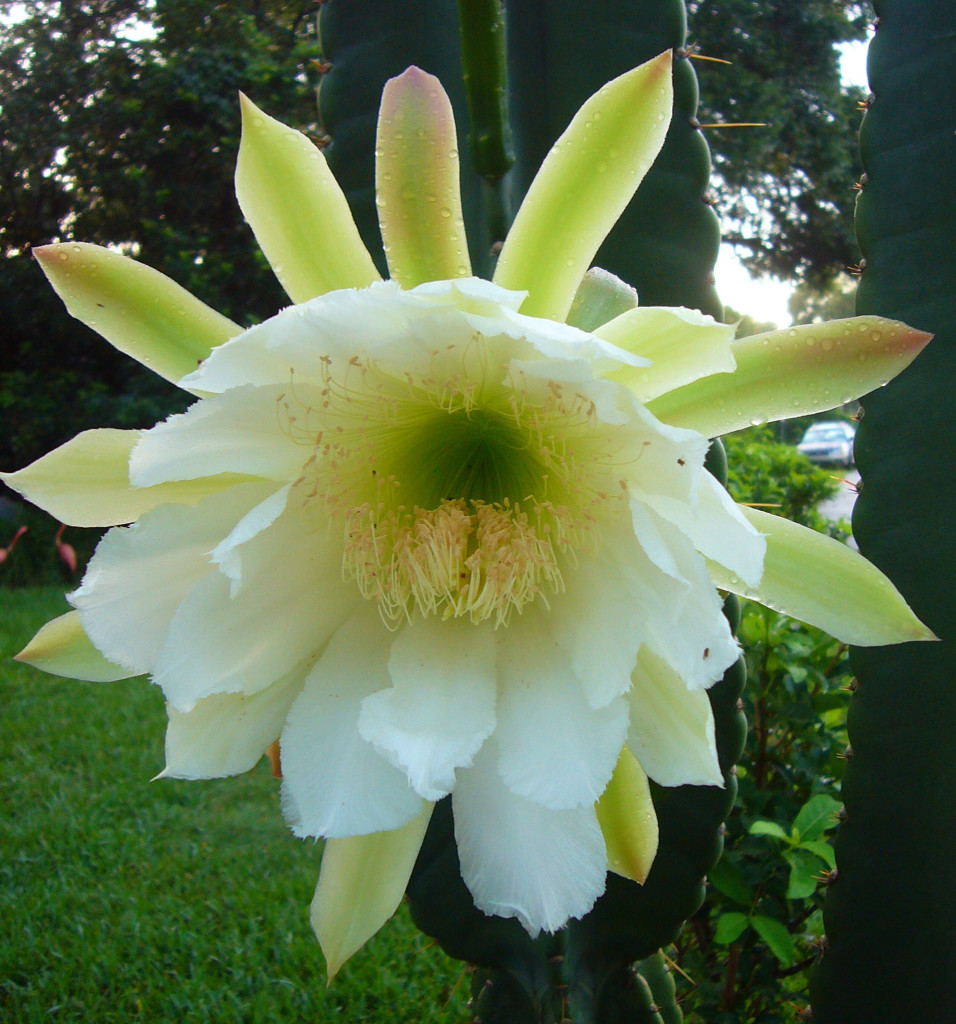
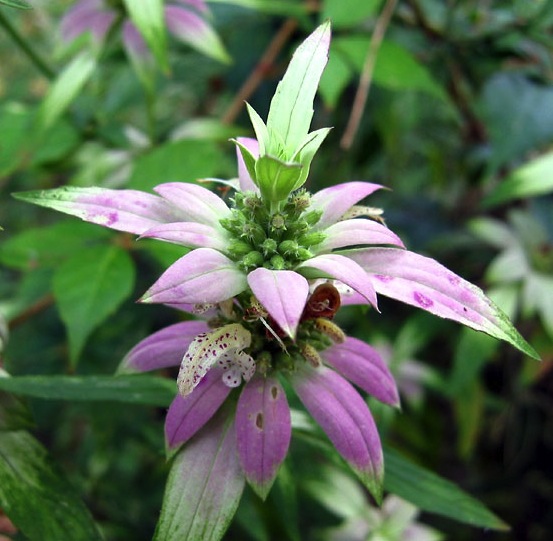
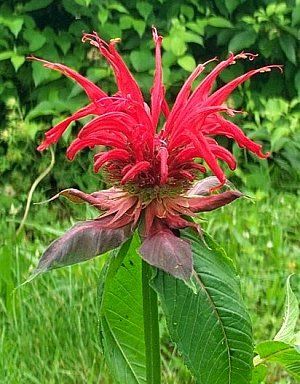
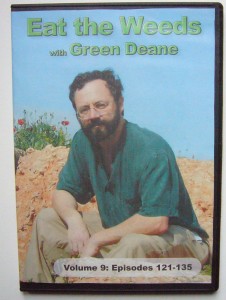
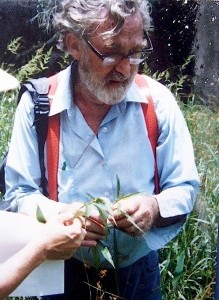
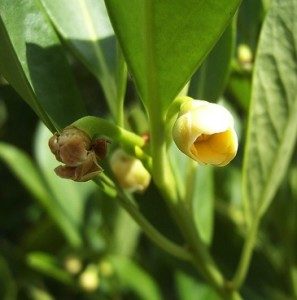

I have that bee balm growing across the street from me. I could tell it was in the mint family – just couldn’t nail down the specifics. Thanks again.
And… rest in peace, Dick. We owe you.
Is there a good book on Florida edible plants with color photos of each, other information that helps identify the plants, a discussion of what plant parts are edible, and how to eat them (raw or cooked)?
I appreciate what you do.
I am a retired chemist and hydrologist that has escaped the city and wants to learn gardening and foraging. Any guidance you can provide will be appreciated. I recently moved to Putnam County.
Unfortunately the answer is no, there is no such book. I do know that Peggy Lantz is in the process of having one published by Pineapple Press and I also know Andy Firk is planning one. Until then my website will have to do.
The new book on Florida’s Wild Edible Plants should be out in early 2014, published by Seaside Publishing, a division of the University Press of Florida. It discusses 65 edible plants, with photos and detail drawings. If you can wait a bit longer, I think you’ll find what you are looking for in it.
Peggy Lantz
Hi Deane,
The “Dragonfruits” found in cultivation as ornamentals and cultivated fruit – climbing triangular cactuses – I see them everywhere in some parts of south FL. Their epiphytic roots do most of the feeding, one can grow them on burlap-wrapped posts, fertilizing directly into the burlap instead of the ground. The two main species in cultivation are Hylocereus undatus (white-fleshed pithaya) and Hylocereus polyrhizus (red-fleshed pithaya) the two also been hybridized to make interesting fruit flesh colors. In the orchards where they are grown for fruit, huge florescent lighting arrays are used, turned on early in the mornings to induce flowering and fruiting several times a year.
Night-blooming hylocereus (undatus) is a species I encountered all over my part of Southwest FL — and in October I would begin to find the bright magenta, white-fleshed dragonfruits on a few larger specimens in town. The seeds aren’t hard in hylocereus species, more more like the crispy seeds of a kiwifruit. I didn’t find the seeds of cereus repandus / “peruvian apple cactus” to be either. These fruits were among my favorite fruits to forage in the neighborhood, presuming I got to them before squirrels, birds and raccoons. Delicious.
I’m very sorry to hear of the loss of this great man who meant so much to you personally. It must be especially difficult to lose him so recently after the passing of your mother. Once again, you have written a wonderful tribute that leaves me wishing I could have met him in person.
When/if you get around to it, I am curious about the lemon balm, Melissa officinalis. I have it growing in a pot and I love the fragrance and enjoy making a sun tea with it along with some peppermint. I searched for it on your website, but didn’t find any reference. Are you familiar with it? I have read it has become naturalized in many areas. Wonder if you have ever come across it in your wanderings. Thank you.
Thanks you… generally I write about wild plants rather than excaped cultivars though some do get through now and then .
I would like to see a breakdown on Oregon Grape. I see it a lot in my neighborhood as an ornamental plant. I also see it in the surrounding woods, so it seems to spread easily, but I wouldn’t call it invasive. I’ve read that is is edible, but I haven’t ever tried it. It is just so common that I believe it deserves a Green Deane Video of its own.
Ahhh Monarda one of my faves. Haven’t had any luck getting it to grow in my yard yet but I’m working on it.
Deane, I’m so sorry to hear about your mom and your dear friend Dick Deurling. I miss being in your awesome class and hope to seed you soon.
Comparing the wild Bee Balms, I have the impression that the firecracker flower, Oswego Tea, Monarda didyma is the most pleasant flavor and less strong on the thymol oregano end of the spectrum.